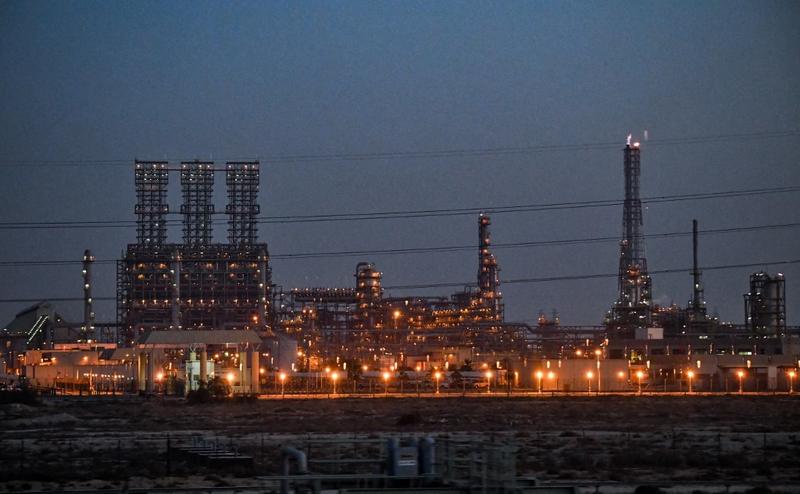 This picture taken on Dec 11, 2019, shows a view of a refinery at the Jubail Industrial City, about 95 kilometres north of Dammam in Saudi Arabia's eastern province overlooking the Gulf. (GIUSEPPE CACACE / AFP)
This picture taken on Dec 11, 2019, shows a view of a refinery at the Jubail Industrial City, about 95 kilometres north of Dammam in Saudi Arabia's eastern province overlooking the Gulf. (GIUSEPPE CACACE / AFP)
LONDON - OPEC on Wednesday cut its 2022 forecast for growth in world oil demand for a fourth time since April and also trimmed next year's figure, citing slowing economies and high inflation.
Oil demand will increase by 2.64 million barrels per day (bpd) or 2.7 percent in 2022, the Organization of the Petroleum Exporting Countries (OPEC) said in a monthly report, down 460,000 bpd from the previous forecast.
Oil demand will increase by 2.64 million barrels per day (bpd) or 2.7 percent in 2022, the Organization of the Petroleum Exporting Countries (OPEC) said in a monthly report, down 460,000 bpd from the previous forecast
"The world economy has entered into a time of heightened uncertainty and rising challenges, amid ongoing high inflation levels, monetary tightening by major central banks, high sovereign debt levels in many regions as well as ongoing supply issues," OPEC said in the report.
The lower demand outlook gives additional context for last week's move by OPEC and its allies, known as OPEC+, to make their largest cut in output since 2020 to support the market. The United States criticized the decision.
ALSO READ: OPEC oil cut strikes a raw nerve in Washington
Even after the downgrade, OPEC still expects demand growth to be stronger this year and next than the International Energy Agency, which issues its latest forecasts on Thursday.
Next year, OPEC sees oil demand rising by 2.34 million bpd, 360,000 bpd less than previously forecast, to 102.02 million bpd. OPEC still expects demand in 2023 to exceed the pre-pandemic rate of 2019.
OPEC cut its 2022 global economic growth forecast to 2.7 percent from 3.1 percent, trimmed next year's figure to 2.5 percent and said there was potential for further weakness.
"Major downside risks still exist," OPEC said, adding there was a limited upside potential from such factors as fiscal measures in the European Union, and any resolution to the Ukraine conflict.
ALSO READ: OPEC+ oil output cut ahead of winter fans inflation concerns
Oil prices, which have been weakening in response to fears about the economy, turned lower after the report was released, trading below $94 a barrel.
OPEC+ has for most of this year been ramping up oil output to unwind record cuts put in place in 2020 after the pandemic slashed demand.
The group's decision for September 2022 called for a 100,000 bpd increase in its output target, of which about 64,000 bpd was meant to come from the 10 participating OPEC countries.
The report showed OPEC output rose by 146,000 bpd to 29.77 million bpd in September, led by Saudi Arabia and Nigeria.
Still, OPEC is pumping far less than called for by the OPEC+ agreement due to under-investment in oilfields by some members.
READ MORE: OPEC+ agrees deep cuts to oil production despite US pressure
OPEC expects world demand for its crude to average 29.4 million bpd next year, down 300,000 bpd from last month and implying a surplus of 370,000 bpd should output continue at September's rate and other things remain equal.
Still, the OPEC+ output cut agreed last week runs for all of 2023 and is much larger, at 2 million bpd.


